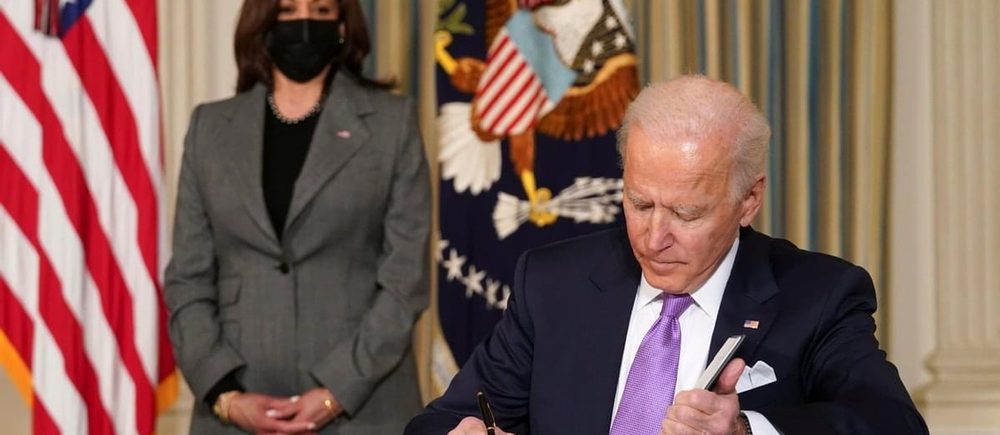The President of the United States, Joe Biden, on Thursday signed the $1.9 trillion relief bill into law, officially ratifying what he originally proposed as the “American Rescue Plan” to help the U.S. economy recover from the impact of the Coronavirus pandemic.
After Congress passed the bill, following a long debate in the Senate, the new stimulus package will now see an increase in direct paychecks to Americans and higher spending on vaccine programs to combat the spread of the virus, which was announced by the World Health Organization (WHO) as a global pandemic a year ago.
The relief bill provides an additional $1,400 in direct payments to the majority of American households, bringing the total government paychecks to $2,000 per household, by spending an additional $400 billion. In addition to a $3,600 support per child for each household for a year.
Furthermore, the bill allocates $350 billion to higher aid to state and local governments. Moreover, the stimulus package includes $20 billion in spending on the vaccination program, as well as higher support for educational institutions and state and local governments.
The bill also extends unemployment benefits at a $300 weekly payment until early September.
Biden’s Democratic Party succeeded in passing the bill through Congress, despite large opposition from Republicans, as it enjoys a majority of seats in the House of Representatives, and half the seats of the Senate, which are not usually enough to pass such a legislation, however, through what is called the reconciliation option, the bill passed through the Senate.
Treasury Secretary Janet Yellenp previously said that the success of the rescue plan will be evaluated based on how quickly it helps the economy return to low unemployment levels as seen prior to the pandemic.
Yellen believes the rise in debt levels due to the increased stimulus spending does not pose a huge risk, considering it the best way to achieve a robust and lasting recovery, expecting the American economy will restore full employment by 2022.
 Noor Trends News, Technical Analysis, Educational Tools and Recommendations
Noor Trends News, Technical Analysis, Educational Tools and Recommendations





